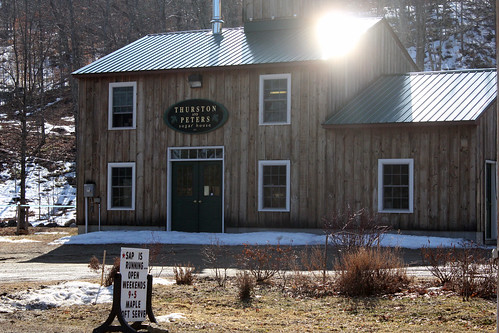
Growing up, my father would set a meal budget for us when we went to restaurants in the city. Our meal couldn't go over $5.00, which often meant that we would order water as a beverage, and no appetizer or dessert. My father was similarly frugal about other food items, and steak was rarely seen in our home. But there was one item that was never scrimped on. Maple syrup. Aunt Jemima and other cheap imitators were never seen in our home. We always had the real thing.
Maple syrup has a vastly superior and more complex flavor than other, simpler sugar syrups. Indeed, even as a child, I knew that the imposter syrups couldn't compete on flavor. And Aunt Jemima knew it, too. In the 1980s, she would advertise her syrups had superior pouring properties to mere maple syrup. (Superior pouring properties? Seriously?) As an impoverished graduate student, I lived on a very tight budget, but I always kept real maple syrup in my home, even at the deluxe price of $1 an ounce.
We recently had the opportunity to visit a maple farm in Maine, Thurston & Peters.
Traditionally, maple sap was gathered in pails hung on taps stuck into the tree.
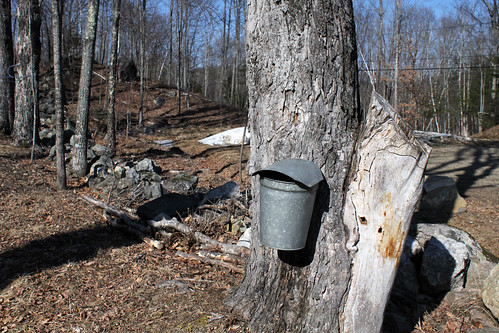
But modern maple syrup facilities have a network of tubes running from each tree into central collection tubes.
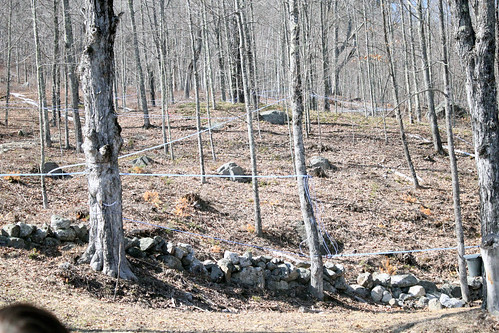
The central tubes run into the sugar shack, where a pump is pulling gallons of sap into a small tank.
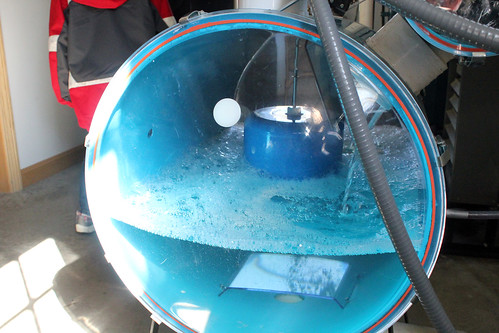
This sap is visibly indistinguishable from water, and while I was fortunate to be allowed to taste it, it is completely flavorless. When it fills this tank, it is pumped through a filter into a larger holding tank.
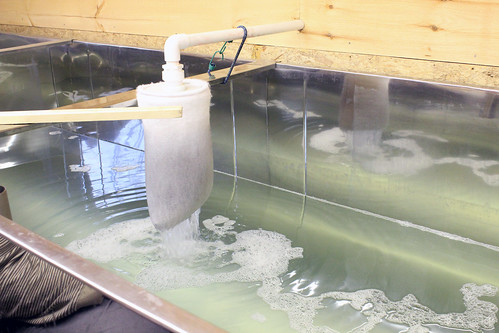
Making maple syrup out of maple sap essentially boils down (pun intended) to two processes - 1) Concentrating the sugar and other tasty molecules and 2) Caramelizing the sugar. In days of yore, this was entirely accomplished by boiling down the sap. But given that maple sap is between 0.7% and 2.8% sucrose (the same sugar as found in table sugar), and given that maple syrup is 60% sucrose, that's a lot of boiling to concentrate your sugar 30-60 fold.
These days, the first step of concentrating the sugar and other tasty molecules is accomplished by reverse osmosis. It's much cheaper, and less energy intensive. The sap is concentrated to about 30% sucrose in this manner, and then it is poured into the maple syrup cooker.
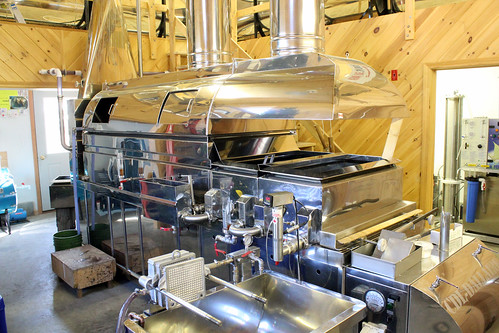
The syrup is boiled until it reaches a concentration of approximately 60% sugar. At this point, it is filtered through diatomaceous earth to remove any cooked chunkies. It is graded primarily on the color that it reaches while boiling down.
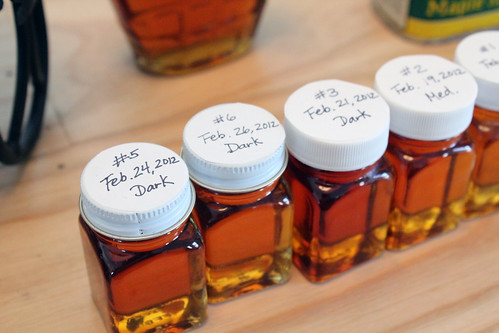
And from here, it can either be processed into maple candies (yum!)
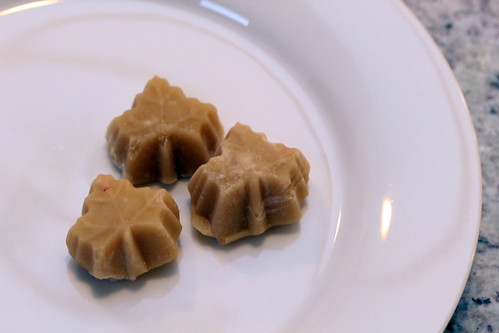
or bottled and sold as syrup. We left with a bottle of syrup, at a vastly reduced cost compared to buying it in the grocery store.
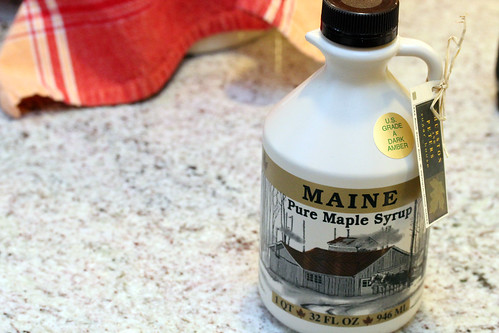
Do visit Harry Hartford at Thurston and Peters Sugar House if you have the opportunity. He is happy to chat with you at length, and he has some very interesting stories to tell, both about the process and history of maple syrup.
Thurston & Peters Sugar House
299 Bond Spring Rd
West Newfield, ME 04095
Two hours north of Boston, open weekends March 3rd through Saturday April 7th 9-5 PM (closed 4/8 Easter Sunday).
View Larger Map
By Bbq Dude

No comments:
Post a Comment